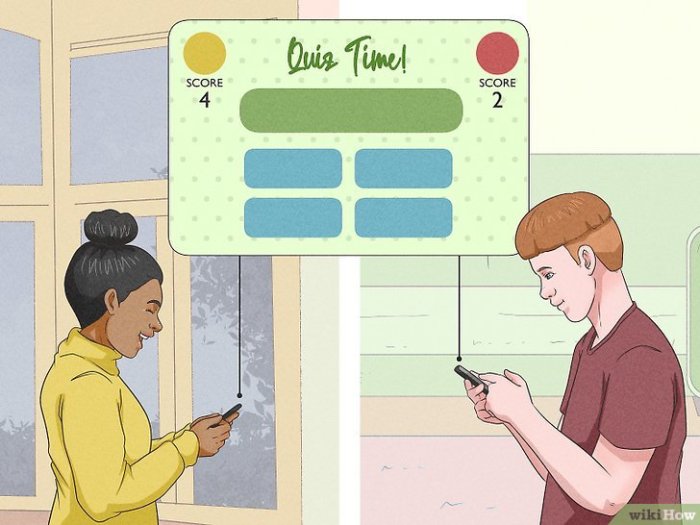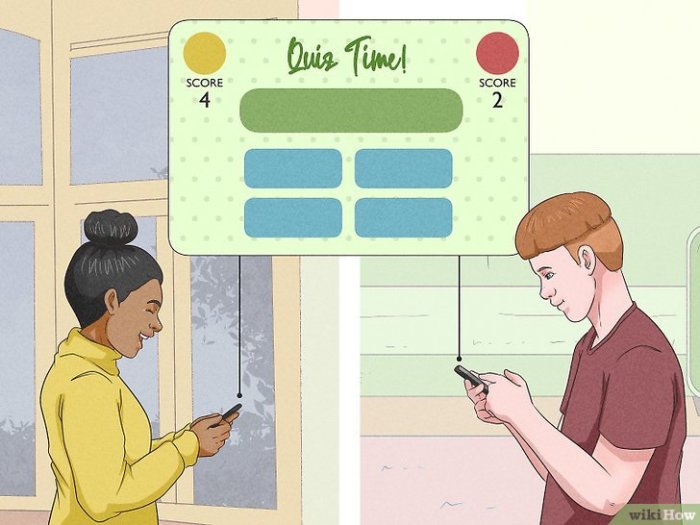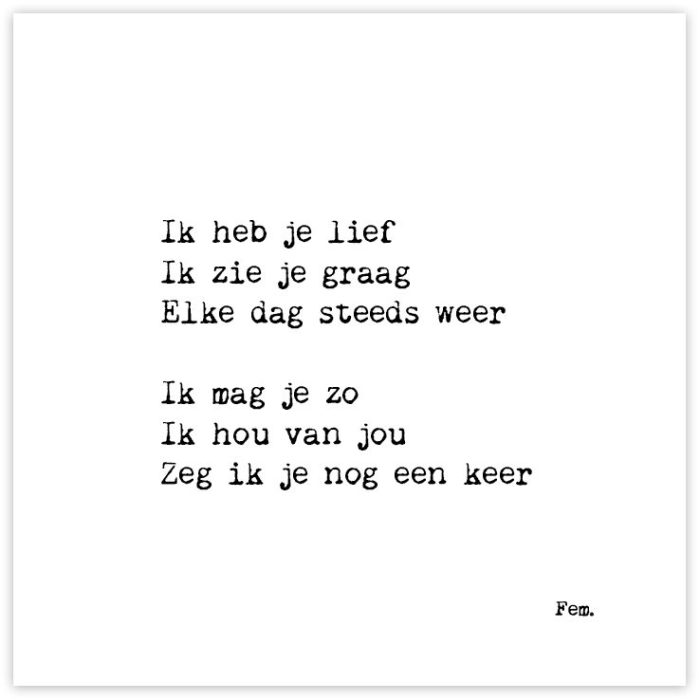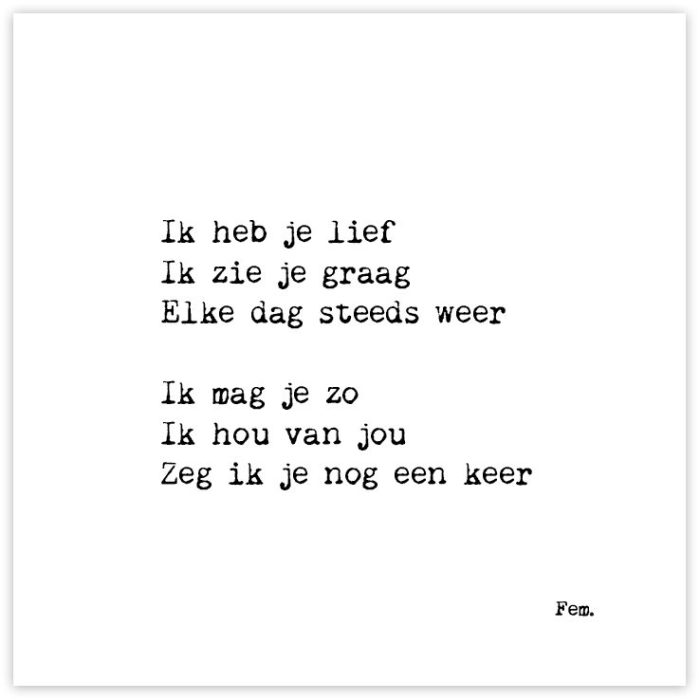Impress Your Boyfriend in a Long Distance Relationship is a comprehensive guide to nurturing a strong, passionate, and fulfilling relationship across the miles. It delves into strategies for building intimacy, maintaining excitement, and overcoming challenges, providing actionable steps to keep the spark alive and the connection thriving.
This guide covers everything from establishing a solid communication schedule to planning future visits and incorporating technology effectively. It also explores the crucial aspect of managing expectations and boundaries, ensuring a healthy dynamic despite the physical distance. Learn how to navigate disagreements, maintain motivation, and celebrate milestones – all while fostering a strong and loving bond.
Building a Strong Foundation
Long-distance relationships demand extra effort to nurture connection and maintain intimacy. Building a strong foundation in these relationships requires conscious effort and a shared commitment to staying connected despite the physical distance. This involves creating a space for open communication, establishing trust, and proactively seeking shared experiences. The foundation laid now will impact the strength and longevity of the relationship.Cultivating intimacy and connection in a long-distance relationship requires a shift in perspective.
It’s not about replacing physical closeness with something else, but rather about recognizing and appreciating the unique opportunities that distance presents. Focus on deepening emotional bonds and building a strong sense of shared identity.
Cultivating Intimacy and Connection
Maintaining a sense of closeness and intimacy is crucial in any relationship, especially a long-distance one. This involves prioritizing quality time together, even when separated by miles. Regular video calls, engaging in shared hobbies or activities virtually, and exchanging thoughtful messages are key components. Creating opportunities for shared laughter, conversation, and emotional vulnerability fosters a deeper connection.
Sharing personal stories and feelings creates a sense of intimacy and understanding.
- Regular Video Calls: Schedule dedicated video calls for meaningful conversations. These calls aren’t just for catching up; they’re opportunities to share your day, express feelings, and engage in deeper conversations. Consider incorporating activities into the calls, like watching a movie together or playing a game.
- Shared Hobbies and Activities: Find hobbies you can enjoy together virtually. This could involve online games, watching movies simultaneously, or participating in online workshops. Shared activities build shared memories and strengthen the connection.
- Thoughtful Messages and Gestures: Express affection and appreciation through thoughtful messages, voice notes, or small gifts. These gestures remind your partner of your presence and care, even when you’re physically apart.
Establishing Trust and Open Communication
Trust is the bedrock of any healthy relationship. In a long-distance relationship, it becomes even more critical. Honest and open communication is vital for maintaining trust. Being transparent about your feelings, needs, and expectations, and actively listening to your partner’s perspective, is essential.
- Honesty and Transparency: Be honest about your feelings, needs, and any challenges you face. This fosters a deeper understanding and strengthens trust. Avoid withholding information, even if it’s difficult.
- Active Listening: Truly listen to what your partner is saying, both verbally and nonverbally. Pay attention to their emotions and perspectives. Ask clarifying questions to ensure you understand their point of view.
- Regular Check-Ins: Schedule regular check-ins to discuss how things are going in your lives. This allows you to address any concerns or issues proactively and maintain open communication.
Maintaining Shared Experiences
Shared experiences are vital for forging a strong sense of connection. In a long-distance relationship, these experiences must be cultivated thoughtfully. Sharing interests, pursuing shared goals, and creating virtual traditions together can bridge the physical distance.
- Virtual Trips and Events: Plan virtual trips to places you both want to visit. Watch documentaries or explore museums online together. Create virtual events, such as game nights or movie nights, to foster a sense of togetherness.
- Creating Shared Traditions: Establish virtual traditions, such as a weekly phone call or a special online date night. These traditions provide structure and predictability to the relationship.
- Sharing Interests and Goals: Discuss your individual interests and goals. Support each other’s pursuits and celebrate milestones together, even virtually. This shows mutual respect and commitment.
Creating a Plan for Consistent and Meaningful Interaction
A well-defined plan for consistent interaction is essential for maintaining a strong connection in a long-distance relationship. It ensures both partners feel heard and valued.
| Day | Time | Activity |
|---|---|---|
| Monday | 7 PM | Video call to discuss the week |
| Wednesday | 8 PM | Virtual game night |
| Saturday | 9 PM | Online movie night |
This schedule is a sample; tailor it to fit your and your partner’s needs and preferences. The most important aspect is that both partners feel heard, understood, and connected. Consistency is key, and this schedule should be reviewed and adjusted regularly to ensure it remains effective.
Showing Affection and Appreciation
Long-distance relationships require extra effort to nurture the connection and maintain the spark. Showing affection and appreciation becomes even more crucial when physical closeness isn’t possible. This involves more than just the occasional text message; it’s about intentional acts of love and care that demonstrate you’re thinking of your partner, even when miles apart. It’s about building a strong emotional bond through thoughtful gestures and consistent communication.Expressing affection in a long-distance relationship is about making your partner feel valued and loved.
Keeping the spark alive in a long-distance relationship takes effort, but it’s totally doable! One way to show your boyfriend you’re thinking of him is to surprise him with a thoughtful gesture. Learning how to install a sliding bolt, for example, might seem unusual, but it could be a great way to show your handyman skills and a surprising talent.
Install a Sliding Bolt might seem like a practical project, but it also demonstrates your resourcefulness and initiative. These actions, big or small, can go a long way in keeping your relationship strong and exciting.
This can be achieved through a variety of methods, from personalized gifts to creative date nights. Understanding your boyfriend’s personality and preferences will greatly enhance your efforts in demonstrating your care and appreciation.
Unique Ways to Express Affection, Impress Your Boyfriend in a Long Distance Relationship
Expressing affection across distances requires creativity and thoughtfulness. Simple gestures can go a long way in showing your partner you’re thinking of them. Sending handwritten letters, filled with personal anecdotes and heartfelt messages, is a tangible way to convey affection. Recording voice notes or creating personalized video messages can offer a more intimate connection, capturing your tone and emotions.
Consider sending small, meaningful gifts that reflect your partner’s interests or hobbies. These small tokens of affection demonstrate your thoughtfulness and attentiveness to their needs.
Methods for Demonstrating Appreciation and Care
Appreciation and care are vital components of a successful long-distance relationship. Expressing gratitude for the little things can strengthen the bond between you and your partner. Regularly acknowledging your boyfriend’s efforts and contributions, both big and small, demonstrates your appreciation. Sending a heartfelt text message expressing gratitude for a thoughtful act or a supportive message can be incredibly meaningful.
Consider sending a care package filled with items that your partner enjoys, like their favorite snacks, books, or cozy clothes.
Surprising Your Boyfriend with Thoughtful Gestures
Surprises are a powerful tool in maintaining excitement and romance in a long-distance relationship. Planning a surprise virtual date night, complete with your favorite movie and snacks, can be a delightful way to connect. Creating a personalized playlist with songs that remind you of your shared memories can evoke feelings of nostalgia and intimacy. Scheduling a video call at an unexpected time, just to check in and chat, can show your partner that you’re thinking of them.
Creative Ways to Celebrate Milestones and Special Occasions
Celebrating milestones and special occasions is essential for maintaining the excitement and connection in a long-distance relationship. Creating a personalized scrapbook or photo album filled with memories from your relationship can be a treasured keepsake. Throwing a virtual party, complete with your partner’s favorite foods and activities, can make a special day feel more intimate. Sending a custom-made gift or a personalized video message can add a special touch to any occasion.
Keeping the spark alive in a long-distance relationship takes effort, but it’s totally doable! One fun way to connect and create shared memories is to try making fossils together using plaster of Paris. Check out this cool tutorial on Make Fossils Using Plaster of Paris for some creative inspiration. It’s a great bonding activity that you can do virtually or even in person if you’re lucky enough to be together! This kind of shared project can really strengthen your connection and show him you care, which is key in any relationship, especially long distance.
Consider sending flowers, a framed photo, or a handwritten card on their birthday or an anniversary to show your love.
Romantic Ideas for Long-Distance Couples
Maintaining a romantic connection in a long-distance relationship requires thoughtful and creative ideas. Setting up a weekly “date night” where you both enjoy a meal or watch a movie together via video call can maintain intimacy. Sharing hobbies and interests can also create common ground and shared experiences. Creating a shared online journal or scrapbook to document your memories and experiences can help to foster a sense of connection and intimacy.
Consider creating a joint online playlist or sharing books with each other.
Maintaining Excitement and Spark: Impress Your Boyfriend In A Long Distance Relationship
Long-distance relationships require extra effort to keep the flame of passion burning brightly. Maintaining a sense of excitement and adventure is crucial for a healthy connection, especially when physical proximity isn’t a constant factor. It’s not about replacing in-person intimacy, but about creatively fostering a deep emotional bond that thrives despite the distance.This often involves strategizing unique ways to connect, actively engaging in shared interests, and consistently demonstrating affection.
It’s about nurturing the spark, even when geographical barriers stand in the way. By focusing on these elements, couples can not only survive but also thrive in a long-distance dynamic.
Virtual Date Ideas
Keeping the spark alive in a long-distance relationship necessitates a creative approach to dates. Virtual dates can be just as engaging and memorable as in-person ones, fostering intimacy and shared experiences.
- Interactive Games: Online games, whether it’s a strategy game, a trivia night, or a virtual escape room, can create a fun and engaging experience. This allows for laughter, shared challenges, and a sense of accomplishment.
- Virtual Cooking Classes: Learning a new cuisine together through a virtual cooking class can be a fun and interactive experience. This promotes collaboration, shared learning, and a tangible outcome. The ability to create a dish together, even virtually, is a significant bonding activity.
- Themed Movie Nights: Choosing a movie genre or theme, and watching it together with live commentary and reactions, can create a fun and exciting experience, even when apart. This provides a shared experience and a common focus of discussion.
- Virtual Museum Tours: Visiting museums together online can open up new worlds and stimulate intellectual curiosity. This can be a great way to learn something new and discuss it together. The use of interactive features and 360-degree views can enhance the experience.
Incorporating Shared Hobbies
A shared passion is a powerful bond, and maintaining it in a long-distance relationship is key. Finding common ground allows couples to create a deeper connection and maintain excitement.
- Online Book Clubs: Discussing books online, sharing interpretations, and engaging in literary debates creates a shared intellectual experience. It fosters a deeper understanding of each other’s thought processes and preferences.
- Collaborative Music Projects: Learning an instrument together or creating music through online tools can be a fun and engaging hobby. This fosters a sense of shared creativity and artistic expression.
- Virtual Sports Leagues: Engaging in online sports leagues allows couples to pursue a shared interest and maintain a competitive spirit, while simultaneously fostering camaraderie. This can involve games like fantasy sports or virtual sports simulations.
- Shared Learning Platforms: Exploring new skills together through online courses or workshops strengthens the bond and provides mutual support in achieving personal goals.
Strategies for Maintaining a Healthy Relationship
Effective strategies for maintaining a healthy long-distance relationship center around consistent communication, mutual respect, and trust.
- Regular Check-Ins: Regular communication, regardless of the medium, is essential to staying connected. These check-ins can be brief but frequent, fostering a sense of closeness and reassurance.
- Open and Honest Communication: Addressing concerns and expressing feelings openly and honestly creates a safe space for vulnerability and growth. This strengthens the emotional connection, even when apart.
- Planning Future Visits: Having something to look forward to, like future visits or trips, maintains hope and anticipation, which is crucial in maintaining excitement.
- Quality Time Together: Even when apart, prioritize quality time spent together through video calls, virtual dates, or messages. This demonstrates a commitment to the relationship and fosters a sense of closeness.
Overcoming Challenges and Conflicts
Long-distance relationships, while incredibly rewarding, can present unique challenges. Navigating disagreements and maintaining a strong connection across geographical distances requires proactive strategies and a deep understanding of each other’s needs. This section explores practical methods for resolving conflicts effectively, handling misunderstandings, and managing the unique stressors that come with being apart.Effective communication is paramount in any relationship, but even more so in a long-distance one.
Open and honest dialogue, coupled with a willingness to understand different perspectives, forms the bedrock of conflict resolution. By establishing clear communication channels and employing constructive conflict resolution techniques, couples can transform disagreements into opportunities for growth and deeper understanding.
Resolving Conflicts Constructively
Addressing disagreements in a healthy way is crucial for maintaining a strong bond. Avoiding unproductive arguments and focusing on solutions is essential. Active listening and empathy are key components in this process. Understanding your partner’s perspective, even if you don’t agree with it, allows for a more productive conversation.
- Establish a Communication Schedule: Regular check-ins, whether daily, weekly, or bi-weekly, help maintain consistent communication and address potential issues promptly. This predictability can reduce the likelihood of misunderstandings escalating into larger conflicts.
- Use “I” Statements: Expressing your feelings and needs using “I” statements avoids placing blame and fosters a more receptive environment for dialogue. For example, instead of saying “You always do this,” try “I feel frustrated when…”
- Take Breaks When Needed: If a conversation becomes heated, agree to take a break and return to the discussion later when emotions have calmed down. This prevents impulsive reactions and ensures a more rational discussion.
Handling Misunderstandings and Miscommunications
Misunderstandings are inevitable in any relationship, but they can be particularly problematic in long-distance relationships due to the lack of nonverbal cues. Clear and concise communication can minimize these mishaps.
- Clarify Expectations: Ensure both partners are on the same page regarding expectations, communication styles, and boundaries. Discuss these openly and frequently to avoid misinterpretations.
- Validate Feelings: Acknowledge and validate your partner’s feelings, even if you don’t necessarily agree with them. Showing empathy and understanding helps diffuse tension and promotes a more positive atmosphere.
- Use Technology Effectively: Utilize video calls, instant messaging, and other digital tools to bridge the distance and foster a sense of closeness. This can help reduce the likelihood of misinterpretations by allowing for visual and vocal cues.
Managing Stress and Anxiety
The stress of distance can be significant. Implementing coping mechanisms can significantly improve well-being.
- Self-Care Practices: Prioritize self-care activities that help manage stress and anxiety, such as exercise, meditation, or engaging in hobbies. Consistent self-care helps maintain emotional equilibrium.
- Create a Routine: Maintaining a consistent daily routine can provide a sense of structure and stability, which can be particularly beneficial during times of stress. This provides a sense of normalcy, which can be crucial in mitigating feelings of isolation.
- Seek Support: Talk to friends, family, or a therapist about your feelings and anxieties related to the long distance. Support systems can provide valuable perspective and coping strategies.
Addressing Loneliness and Isolation
Feeling lonely or isolated is a common experience in long-distance relationships. Strategies can help mitigate these feelings.
- Maintain Social Connections: Stay connected with friends and family, both near and far, to combat feelings of isolation. Regular interaction with loved ones can provide emotional support and a sense of belonging.
- Plan Regular Visits: Schedule visits to see your partner as often as possible to maintain physical intimacy and strengthen the bond. These visits can act as significant reminders of the relationship and help counter the effects of distance.
- Embrace Shared Activities: Engage in activities together virtually, such as watching movies, playing games, or cooking meals. These shared experiences help maintain a sense of connection and excitement.
Planning Future Interactions
Long-distance relationships require proactive planning to nurture the connection and maintain excitement. Simply waiting for visits isn’t enough; creating a shared vision of the future fosters anticipation and strengthens the bond. This involves not only scheduling visits but also envisioning shared experiences and creating a sense of shared progress towards common goals.Planning for the future is crucial for a long-distance relationship.
It transforms the abstract concept of a future together into tangible milestones and shared experiences, thereby solidifying the relationship’s foundation and highlighting its potential.
Creating Shared Goals and Aspirations
A strong long-distance relationship hinges on shared dreams and goals. Identifying common interests and aspirations helps create a sense of shared purpose and reinforces the idea of a future together. This shared vision extends beyond simple visits; it encompasses joint endeavors, personal growth, and the development of a strong emotional connection.
Designing a Timeline for Future Visits and Interactions
Planning future interactions involves creating a detailed timeline that includes both short-term and long-term goals. A timeline helps maintain anticipation and structure the relationship, especially in the face of distance. It provides a framework for both physical visits and virtual interactions, balancing the need for physical closeness with the benefits of regular communication.
- Short-term Visits: Schedule short visits (e.g., a weekend trip, a week-long vacation) to maintain physical closeness and build shared memories. These visits can be for specific events, like a concert or a sporting event. This reinforces the importance of each other’s presence and keeps the spark alive.
- Long-term Visits: Plan longer visits (e.g., a month-long trip, a summer stay) to create more in-depth experiences and foster deeper connections. This could involve traveling to a new city or spending time in nature. Consider creating a shared bucket list of places to visit together.
- Virtual Interactions: Schedule regular virtual dates, game nights, or movie nights to maintain emotional connection. This can include watching a show together or attending a virtual concert.
Creating a Vision Board or Future Plan
A vision board can be a powerful tool for visualizing future interactions and shared experiences. Gathering images, words, and phrases that represent your dreams and aspirations together can create a tangible representation of your shared future. It’s a visual roadmap that symbolizes the goals and desires you both share, thereby enhancing the sense of unity and purpose.
- Gathering Ideas: Collect images, words, and phrases that represent your shared aspirations, from travel destinations to career goals. Use magazines, online resources, or even create your own images.
- Creating the Board: Arrange the images and words on a board or a digital platform to create a visual representation of your shared future. This can include images of places you’d like to visit or activities you’d like to experience together.
- Reviewing and Updating: Regularly review and update the vision board to reflect the changing dynamics of your relationship. This is an ongoing process of reflection and adjustment as your relationship progresses. This dynamic process mirrors the evolving nature of long-distance relationships.
Managing Expectations and Boundaries

Long-distance relationships require a keen awareness of expectations and boundaries. Open communication about needs and limitations is crucial for maintaining a healthy and fulfilling connection. Establishing clear boundaries ensures both partners feel respected and valued, fostering trust and understanding.Understanding each other’s needs and limitations is fundamental to navigating the unique challenges of distance. This involves acknowledging individual needs, such as personal time, social activities, and emotional support, and discussing how these needs can be accommodated within the relationship.
Setting Clear Expectations
Establishing clear expectations about the relationship is vital. This includes frequency of communication, the types of activities you’ll do together, and how you’ll handle disagreements. Defining these expectations early on can prevent misunderstandings and disappointments down the line.
Discussing Needs and Limitations
Effective communication is key to addressing individual needs and limitations. Use “I” statements to express your feelings and needs without placing blame on your partner. For example, instead of saying “You never call enough,” try “I feel lonely when we don’t talk for more than two days.” This approach focuses on your own experience and allows for a more productive conversation.
Communicating Effectively About Time Commitments
Openly discussing time commitments is essential. Sharing schedules, including work, social events, and personal commitments, allows for a realistic understanding of available time. Be honest about your availability and what you can reasonably dedicate to the relationship. For example, if you have a busy week at work, communicate this to your partner so they understand you might have less time for calls or video chats.
Communicating Effectively About Personal Space
Personal space is equally important in a long-distance relationship. Establish clear boundaries about how much personal time each partner needs and respects. Be open about needing time alone for hobbies, friendships, or personal development. Discuss what constitutes appropriate personal space and how it can be respected in the relationship. This could involve agreeing on specific times for communication or setting limits on how much information is shared.
Establishing a Schedule That Works
Creating a schedule that works for both partners requires mutual understanding and flexibility. This schedule can include specific times for calls, video chats, or shared activities. A structured approach can ensure consistent communication and shared experiences. Consider scheduling time for spontaneous chats or surprise calls as well. Be adaptable and willing to adjust the schedule as needed, especially when life throws unexpected curveballs.
Avoiding Over-Communication and Over-Reliance
Maintaining a healthy balance is key. Over-communication can lead to feeling overwhelmed, while over-reliance can stifle independence. It’s important to strike a balance between maintaining a connection and allowing space for personal growth and activities outside the relationship. Agreeing on communication frequency and methods, like alternating between calls and text messages, can help avoid over-communication. This allows for a healthier level of independence and reduces the feeling of being overly reliant on each other.
Utilizing Technology Effectively
Long-distance relationships demand creative strategies to bridge the geographical gap. Technology provides powerful tools for maintaining connection and fostering intimacy, even when apart. Leveraging these tools effectively can significantly enhance the relationship, ensuring both partners feel heard, understood, and appreciated.Technology allows for a deeper connection by enabling communication beyond simple text messages. It allows for sharing experiences and building memories together, even when physically distanced.
Careful planning and strategic use of various platforms are key to fostering a strong and thriving long-distance relationship.
Enhancing Communication Through Video Calls
Regular video calls are essential for maintaining a sense of closeness. They allow for non-verbal cues, facial expressions, and the ability to see each other’s reactions, which significantly improves the quality of interaction. Video calls create a more intimate experience compared to text-based communication.
- Scheduling Regular Video Calls: Establishing a consistent schedule for video calls helps both partners anticipate and look forward to quality time together. This predictability creates a sense of normalcy and routine in the relationship, even with distance. Examples include a weekly date night via video call, a daily morning chat, or a dedicated “check-in” call each evening.
- Utilizing Messaging Apps: Messaging apps can be used to supplement video calls and provide a platform for casual conversations and quick updates throughout the day. Sharing pictures, videos, or short messages keeps the connection alive between calls. Avoid relying solely on text, as non-verbal cues are important in building intimacy.
Sharing Photos and Videos
Sharing photos and videos is a vital aspect of fostering a connection. It allows partners to experience each other’s lives, share moments, and stay updated on daily activities. This visual aspect adds another layer of intimacy.
- Sharing Daily Moments: Sharing photos and videos of daily activities, such as meals, work, or hobbies, helps the other partner feel included and involved in the other’s life. This allows the other partner to feel like they are a part of the day-to-day events, even if they are not physically present.
- Creating Photo Albums and Video Journals: A collection of photos and videos documenting shared memories and milestones, like anniversaries, birthdays, or special occasions, fosters a sense of history and strengthens the emotional bond. This archive can serve as a reminder of cherished moments.
Planning Virtual Dates and Experiences
Virtual dates and experiences provide opportunities to engage in shared activities and create new memories together. This is particularly important in long-distance relationships where physical closeness is limited.
- Virtual Movie Nights: Choosing a movie or show to watch together via video call and discussing it afterward can create a shared experience and foster conversation. This is similar to the experience of watching a movie together in person, fostering bonding through a shared activity.
- Virtual Cooking Classes or Games: Taking a virtual cooking class together or playing an online game can be a fun way to spend quality time and learn new skills. This fosters interaction and can even be a collaborative activity, such as creating a dish together or playing a strategy game.
Staying Motivated and Committed
Long-distance relationships demand a significant amount of effort and dedication. Maintaining motivation and commitment throughout the journey requires conscious effort and a shared understanding of the challenges involved. It’s not about ignoring difficulties, but rather about actively nurturing the relationship and finding ways to stay connected and enthusiastic despite the physical distance.
Building Mutual Support Systems
Sustaining a strong emotional connection is crucial in long-distance relationships. A shared understanding and proactive effort to maintain emotional closeness fosters mutual support. This involves actively listening to each other’s concerns and offering encouragement during challenging times. Creating a supportive environment where both partners feel valued and heard is essential for long-term success.
Strategies for Overcoming Obstacles
Obstacles are inevitable in any relationship, especially long-distance ones. Developing strategies for addressing these hurdles proactively is key to maintaining the relationship’s momentum. This includes open communication about potential roadblocks, devising practical solutions, and acknowledging the challenges as shared experiences rather than individual burdens.
Celebrating Small Wins and Milestones
Recognizing and celebrating both large and small milestones strengthens the bond and reinforces the positive aspects of the relationship. This could range from reaching a shared goal to overcoming a specific hurdle. Remembering to acknowledge and appreciate each other’s efforts, no matter how small, creates a positive feedback loop, reinforcing the commitment and motivation to continue the journey together.
These celebrations foster a sense of accomplishment and shared triumph.
Maintaining Positive Attitudes
A positive attitude is essential in navigating the complexities of a long-distance relationship. Focusing on the positive aspects of the relationship and proactively addressing concerns can greatly impact the overall experience. This involves consciously choosing to view challenges as opportunities for growth and resilience rather than insurmountable obstacles.
Encouraging Mutual Growth
Mutual encouragement and support are vital components of a healthy long-distance relationship. This involves actively encouraging each other’s personal and professional growth, understanding that personal development often contributes to the strength of the relationship. By supporting each other’s pursuits and celebrating individual successes, both partners feel valued and empowered, which in turn strengthens the bond.
Examples of Practical Strategies

Long-distance relationships require extra effort to maintain intimacy and connection. Practical strategies can significantly enhance the experience, fostering a strong bond despite geographical distance. These strategies range from thoughtful surprises to creative virtual dates, demonstrating a deep care and understanding for your partner’s needs.
Surprise Your Boyfriend
Planning small, thoughtful surprises can significantly boost your boyfriend’s spirits and remind him of your presence. These gestures don’t need to be elaborate or expensive; the key is the thought behind them. A handwritten letter expressing your love and appreciation, a care package filled with his favorite snacks and a small gift, or a video call with a special song playing in the background are all examples of simple yet effective surprises.
Remember to tailor the surprise to his specific preferences and personality for maximum impact.
Incorporate Shared Hobbies into Your Routine
Shared hobbies can strengthen your connection and provide common ground for conversation and fun. By incorporating these shared hobbies into your daily or weekly routine, you can build a sense of togetherness and shared experiences. If you both enjoy cooking, schedule virtual cooking classes together. If you are both avid gamers, play online games together, sharing your progress and strategies.
Even watching a favorite TV show or movie at the same time, with video calls in between, can create a sense of closeness.
Keeping the spark alive in a long-distance relationship takes effort, but it’s totally doable! One way to impress your boyfriend is by surprising him with a thoughtful gift, or maybe even a virtual date night, complete with his favorite snacks. Speaking of impressive, did you see the new trailer for the upcoming film “Inferno”? Inferno releases new trailer The visuals are seriously next-level.
It’s important to stay connected and creative in these types of relationships, which is key to keeping the romance alive. And that’s exactly what you should be doing to impress your boyfriend.
Celebrate Birthdays and Anniversaries
Celebrating special occasions, like birthdays and anniversaries, is crucial in maintaining a strong bond in a long-distance relationship. Planning thoughtful celebrations, despite the distance, shows your partner how much you care. Sending a personalized video message with heartfelt wishes, creating a themed virtual party with friends and family, or sending a special gift that reflects your shared memories are all effective ways to make these occasions feel special.
These gestures demonstrate your commitment and effort in maintaining the relationship.
Virtual Date Ideas
Virtual dates can be just as engaging and enjoyable as in-person ones. The key is to be creative and think outside the box. Try a virtual cooking class, where you both cook the same dish and share the experience through video calls. Watch a movie or a play together through a streaming service, and discuss it afterward.
Organize a virtual game night, playing online games together, or participate in a virtual escape room. These are just a few examples; the possibilities are endless.
Navigate Conflict Constructively
Conflict is inevitable in any relationship, including long-distance ones. However, constructive conflict resolution can strengthen your bond and create a space for open communication. When disagreements arise, take time to calmly and rationally discuss the issue, listen attentively to your partner’s perspective, and focus on finding solutions together. Active listening, empathy, and a willingness to compromise are key elements in navigating conflicts constructively.
Avoid accusatory language and focus on understanding each other’s viewpoints. Remember, effective communication is the cornerstone of resolving any conflict.
Visual Representation of Strategies
Long-distance relationships require extra effort and creativity to maintain connection and intimacy. Visualizing strategies can be a powerful tool for understanding and implementing effective communication, affection, and conflict resolution techniques. This section provides visual representations of key strategies to help you and your boyfriend navigate the challenges of distance.
Communication Styles
Understanding different communication styles is crucial for effective dialogue in a long-distance relationship. Misunderstandings often arise from differing communication preferences. This table Artikels various communication styles and their characteristics:
| Communication Style | Characteristics | Example |
|---|---|---|
| Direct | Clear, concise, and straightforward communication. | “I feel hurt when…” |
| Indirect | Hints, suggestions, or subtle cues instead of direct statements. | “I’m not sure how I’m feeling about…” |
| Passive | Avoiding confrontation and expressing needs indirectly. | “Maybe we could…” |
| Aggressive | Expressing needs or opinions forcefully, often at the expense of the other person’s feelings. | “You always…” |
| Assertive | Expressing needs and opinions clearly while respecting the other person’s feelings. | “I feel…” |
Expressing Affection
Showing affection in a long-distance relationship requires thoughtful consideration and creativity. The following table presents various ways to express affection across distances:
| Method | Description | Example |
|---|---|---|
| Verbal Affirmation | Expressing appreciation and admiration through words. | “I love your sense of humor.” |
| Acts of Service | Doing tasks or favors to show support and care. | Sending a care package. |
| Gifts | Giving thoughtful presents or tokens of affection. | A small gift for a special occasion. |
| Quality Time | Dedicate focused time for meaningful interactions. | Scheduling a video call. |
| Physical Touch (when possible) | Hugs, kisses, or holding hands (if you’re in the same location). | Physical affection during visits. |
Conflict Resolution Techniques
Addressing disagreements constructively is vital for maintaining a healthy long-distance relationship. This table Artikels effective conflict resolution strategies:
| Technique | Description | Example |
|---|---|---|
| Active Listening | Paying close attention to the other person’s perspective without interrupting. | Summarizing what the other person said. |
| Empathy | Trying to understand the other person’s feelings and point of view. | “I can see why you feel that way.” |
| Compromise | Finding solutions that meet the needs of both partners. | Meeting in the middle on a specific issue. |
| “I” Statements | Focusing on your own feelings and needs rather than blaming the other person. | “I feel frustrated when…” |
| Taking Breaks | Stepping away from the conversation when emotions escalate. | Agreeing to discuss the issue later. |
Planning Virtual Dates
Planning virtual dates can be just as engaging and enjoyable as in-person dates. This table provides some tips:
| Idea | Description | Example |
|---|---|---|
| Theme Nights | Choose a theme for the date, like a movie night or a cooking class. | A themed virtual cooking class. |
| Interactive Games | Play online games together to foster fun and interaction. | Playing a board game online. |
| Virtual Tours | Explore different locations or museums online. | Virtual museum tours. |
| Watch Movies/Shows Together | Watch a movie or show at the same time, commenting on it as you watch. | Streaming a show and chatting. |
| Cooking Classes | Take an online cooking class together. | A virtual cooking class together. |
Maintaining Motivation
Maintaining motivation in a long-distance relationship requires consistent effort and positive reinforcement. This table Artikels strategies for staying motivated:
| Strategy | Description | Example |
|---|---|---|
| Setting Realistic Goals | Establish achievable milestones and rewards. | Weekly video calls, monthly visits. |
| Remembering Shared Goals | Focusing on the shared future and aspirations. | Creating a vision board together. |
| Positive Self-Talk | Encouraging positive thoughts and self-care. | Celebrating small victories. |
| Support System | Seeking encouragement and support from friends and family. | Talking to a friend about challenges. |
| Reward System | Celebrating milestones and achievements. | A special treat when you reach a goal. |
Final Thoughts
Ultimately, Impress Your Boyfriend in a Long Distance Relationship empowers couples to not only survive but thrive in a long-distance love. By implementing the strategies Artikeld, you’ll learn how to strengthen your bond, overcome obstacles, and create a future filled with shared experiences, even from afar. Remember, love transcends distance when nurtured correctly.




